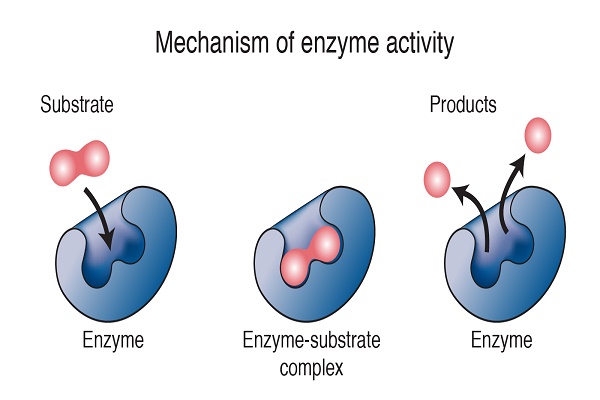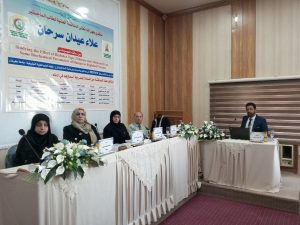Enzymes are organic molecular biochemical catalysts (formed naturally inside the cells of living organisms), which increase the speed of chemical reactions without being consumed in this process and without becoming part of their products, as they work to convert the basic reaction material to other molecules known as products.
Most metabolic processes, whether they are anabolism or catabolism, need enzymes to quickly occur and reduce their activation energy to preserve plant life. Consequently, as an outcome, it preserves the lives of all living things on Earth. The high enzyme’s ability has been shown to stimulate more than 5000 types of biochemical reactions in the cell. This is via increasing the speed of chemical reactions and reducing the activation energy needed for these reactions to occur, and its capabilities to convert the basic reaction material to the products may reach millions of times compared to the transformations that occur without those specialized enzymes.
It is proven that all enzymes are protein compounds with large molecular weights and upon decomposition, they give amino acids and therefore amino acids are considered as units for building proteins and enzymes. It is confirmed that all enzymes are protein compounds with large molecular weights and upon decomposition, they give amino acids and therefore amino acids are considered as units for building proteins and enzymes.
Enzymes are present in all living organisms in a free form either in the cellular cytoplasm or as a constraint that somehow binds to cell components, such as oxidation and reduction enzymes present in the mitochondria that contribute to the processes of completely oxidizing pyruvic acid during air respiration.
Most enzymes consist of two parts, the first one proteins is called (Apo enzyme) and the second is non-proteinuric called (Co-enzyme) that can be separated if the non-protein part is not closely related to the protein part like ATP, NADP and FAD. However, if the non-protein part is closely related to the protein part, it is called the Prosthetic group. Furthermore, it is usually from metal ions such as iron, copper, or manganese, and the presence of the enzymatic or adjacent group is a necessary condition for the activity and effectiveness of the enzymes.
It is well known that the enzymatic activity is greatly affected by temperature and acidity. These factors lead to the result of the presence of appropriate seasons for plant growth such as the spring and autumn season in Iraq in addition to other seasons for plant hibernation. As well as the enzymatic activity affected by the presence of certain chemical molecules that work as stimulants or inhibitors. Their work the enzymes may increase the concentration of some fertilizers increase the toxicity of some of the compounds that cause inhibition of the action and activity of enzymes in a very similar way to that of increasing the concentration of therapeutic drugs and toxins in animals or humans.
The main reaction materials for enzymes included in chemical reactions must be activated before they enter in the reaction. This activation requires a measure of energy called (the activation energy needed for the reaction to occur) and the role that enzymes play is to complete the reaction with the lowest cost of energy. This can occur when the amount of activation energy required for the molecule of the reaction substance decreases. A larger number of molecules are activated and enters into the reaction. However, in the presence of the enzyme, it enters with the reaction substance in a chemical union in a temporary compound component. This reaction can be activated with a small amount of energy, such as, the heat comparing to the energy needed to activate the reaction substance itself in the absence of the enzyme. After which this temporary compound is broken down into the reaction products and the enzyme is released to repeat the same cycle with a new molecule of the base material.
Enzymes participate in all interactions necessary to preserve the life of living organisms, including plants, through the processes of synthesis, disassociation, excretion, or detoxification, or the supply of organisms with vital energy. Even if no enzymes, living organisms would not be able to preserve their lives, and they are an effective factor in various activities of living organisms. Whether it is small-sized seeds, animal creatures, or humans, the feather and the root stand out from the seed as a result of the action and action of the enzymes in the live seed.
Dr. Sabah Gazi Shareef Al – Agha































































